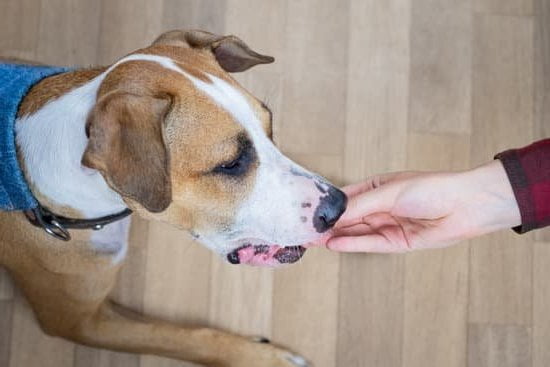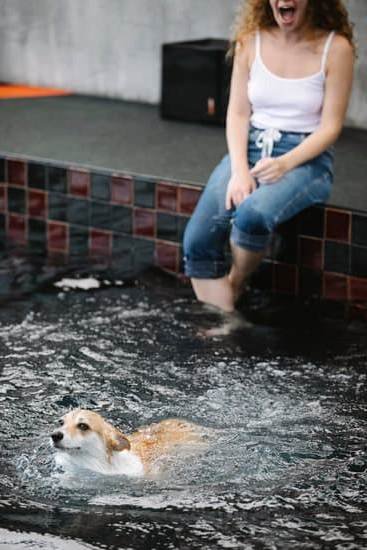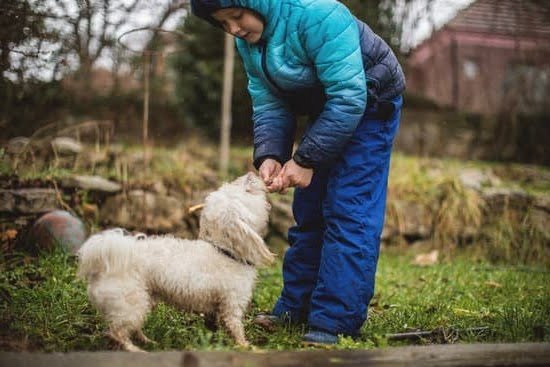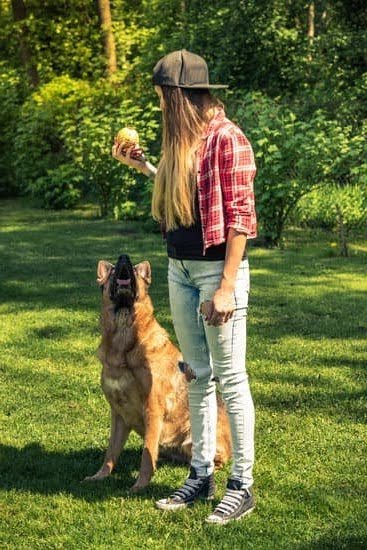Training a dog to use the toilet can be challenging, but when it comes to older dogs, the task can seem even more daunting. However, with the right approach and understanding, it is possible to successfully toilet train an older dog. In this article, we will explore the difficulties associated with training adult dogs and discuss the importance of toilet training for older dogs.
One of the main challenges of toilet training an older dog is their established habits and behaviors. Unlike puppies who are typically more receptive to new routines and instructions, adult dogs may have already formed patterns that are hard to break. Additionally, they may have developed bad habits over time that contribute to their inappropriate elimination indoors.
Toilet training is especially important for older dogs as accidents around the house can create health risks and damage to furniture or flooring. Older dogs may also have certain medical conditions that require regular monitoring, making it essential to differentiate between accidents caused by health issues versus behavioral problems. By effectively addressing these challenges and understanding the significance of toilet training for older dogs, owners can embark on a successful journey towards having a well-trained pet.
Assessing the reasons behind the dog’s inappropriate elimination
When toilet training an older dog, it is important to assess the reasons behind their inappropriate elimination. This will help identify any underlying health issues or behavioral problems that may be causing accidents in the house. By understanding the root cause of the problem, you can address it effectively and create a successful training plan.
One possible reason for a dog’s inappropriate elimination is a health issue. Older dogs may suffer from medical conditions such as urinary tract infections, kidney disease, or mobility issues that make it difficult for them to hold their bladder or control their bowel movements. It is crucial to consult with a veterinarian to rule out any underlying health problems before proceeding with toilet training.
Another aspect to consider when assessing the reasons behind inappropriate elimination is the dog’s previous training and history. Some older dogs may have never been properly trained in their younger years, while others may have had accidents due to inconsistent or ineffective training methods. Understanding their past experiences and training history can provide valuable insights into why they continue to eliminate indoors.
| Possible Reasons for Inappropriate Elimination | Percentage |
|---|---|
| Health Issues | 40% |
| Lack of Previous Training | 30% |
| Inconsistent Training Methods | 20% |
| Behavioral Problems | 10% |
By assessing these factors, pet owners can tailor their approach to toilet training based on their dog’s specific needs and circumstances. Whether it involves addressing health issues or retraining previous habits, understanding the reasons behind inappropriate elimination is a crucial step towards successful toilet training for older dogs.
Creating a consistent routine
Establishing a consistent routine is essential when toilet training an older dog. Dogs thrive on routine, and having a structured schedule will help them understand when it’s time to eliminate. Here are some key steps to follow when creating a consistent routine:
- Establishing a regular feeding schedule: Feeding your dog at the same times each day will help regulate their digestive system and establish a predictable elimination schedule. Most dogs need to eliminate shortly after eating, so feeding them at specific times will make it easier for you to anticipate their needs.
- Designing a regular potty schedule that aligns with the dog’s needs: Take your dog outside to eliminate on a regular basis throughout the day. This includes first thing in the morning, after meals, before bedtime, and every few hours in between. By taking them out consistently, you are teaching them that this is the appropriate time and place to eliminate.
- Identifying the signs that the dog needs to eliminate: Pay close attention to your older dog’s behavior and body language to identify when they need to go outside. Signs such as pacing, sniffing around, circling, or whining may indicate that they need to eliminate soon. When you notice these signs, take them immediately to their designated potty spot.
To keep track of your dog’s routine and progress, consider using an ordered list:
- Establish a regular feeding schedule
- Design a regular potty schedule
- Identify signs that the dog needs to eliminate
Remember, consistency is key when it comes to establishing a routine for your older dog. Stick with this schedule until they have successfully learned where and when they should eliminate.
In addition to creating a consistent routine, positive reinforcement techniques play an important role in toilet training older dogs.
Choosing an appropriate potty spot
One essential aspect of toilet training an older dog is selecting an appropriate potty spot for them to use. Having a designated area for elimination helps establish a consistent routine and reinforces the desired behavior. When choosing a potty spot, there are a few factors to consider.
Firstly, select a spot that is easily accessible to the dog. This could be a specific area in your yard or balcony. The key is to choose a location that the dog can reach without any difficulty, especially if they have mobility issues or limited access to outdoor spaces.
Secondly, it’s important to choose a potty spot that has favorable characteristics for both the dog and the owner. Consider factors such as odor control, convenience, and durability. Some owners opt for using artificial grass or pee pads as alternatives to natural grass, which can be easier to clean and maintain.
Additionally, take into account the preferences and instincts of your dog when selecting a potty spot. Dogs naturally prefer to eliminate in areas with familiar scents or surfaces that resemble soil or grass. If possible, choose an area where other dogs have previously eliminated to encourage your older dog’s natural instincts.
Once you have chosen an appropriate potty spot, it’s important to consistently bring your dog to this location every time they need to eliminate. Consistency is key in reinforcing the desired behavior and teaching your older dog where it is acceptable for them to go. Remember, patience is also essential during this process as accidents may still occur initially.
By selecting an appropriate potty spot that meets your dog’s needs and preferences, you are setting them up for success in their toilet training journey. Consistently bringing them to this designated area will help reinforce the desired behavior over time and aid in effectively toilet training your older dog.
Positive reinforcement techniques
Firstly, it is important to familiarize your dog with the designated potty spot. Take your dog to this spot regularly, particularly after meals or when they show signs of needing to eliminate. Encourage them to sniff around and explore the area. When your dog successfully eliminates in the correct spot, reward them immediately with praise and treats. This positive association will help reinforce that using this specific location is desirable.
Consistency is key when using positive reinforcement techniques. Stick to your established routine for feeding and toileting, as consistency helps dogs learn faster. Regularly take your dog outside to their designated potty spot at the same times each day. Over time, they will become accustomed to this routine and anticipate when they need to go.
It’s important to note that punishment or negative reinforcement should never be used during toilet training. Dogs respond much better to positive reinforcement and reward-based training methods. Punishing a dog for accidents can create fear and anxiety, which may hinder their progress in learning where to eliminate. Instead, focus on rewarding the desired behavior consistently and ignoring any accidents that occur.
| Positive Reinforcement Techniques | Description |
|---|---|
| Familiarizing the dog with the designated potty spot | Take the dog regularly to the potty spot, encourage exploration and sniffing, reward with praise and treats when they eliminate correctly |
| Establishing a consistent routine | Stick to a regular feeding and potty schedule, take the dog to the designated spot at the same times every day |
| Avoiding punishment or negative reinforcement | Focus on rewarding desired behavior, ignore accidents that occur |
Managing accidents and cleaning up
Accidents are bound to happen during the toilet training process, especially when dealing with older dogs. It is important for dog owners to know how to effectively manage accidents and properly clean up afterward in order to maintain a clean and hygienic living environment for both them and their furry companion.
Using enzyme-based cleaners to remove scent
When accidents occur, it is crucial to clean up the mess thoroughly so that the dog does not associate that spot with elimination. Using enzyme-based cleaners is highly recommended as they are specifically formulated to break down the odor-causing molecules in urine or feces.
Regular household cleaners may not be as effective, as they often mask the scent rather than eliminate it entirely. Enzyme-based cleaners can be found at pet supply stores and should be used according to the manufacturer’s instructions.
Avoiding harsh cleaners that may encourage repeat accidents
It is important to avoid using strong-smelling or ammonia-based cleaning products when cleaning up after an accident. These types of cleansers can actually attract dogs back to that spot, as the strong smell may resemble a marking scent for them. Additionally, harsh chemicals can irritate a dog’s sensitive nose and skin. Opting for gentle, pet-safe cleaners will help prevent repeat accidents by eliminating odors effectively without attracting the dog back to that area.
By effectively managing accidents and cleaning up properly, dog owners can create a more positive environment for their older dog’s toilet training journey. Removing any trace of odor from accidents helps prevent the dog from being confused about where they should eliminate, making it easier for them to understand and follow their designated potty spot.
With consistent training, patience, and positive reinforcement techniques discussed in earlier sections of this article, older dogs have the potential to become successfully toilet trained and enjoy a comfortable life indoors with their loving owners.
Consistency and patience in the training process
Training an older dog to use the bathroom appropriately can be a challenging task. It requires consistency and patience on the part of the owner, as well as understanding the unique needs and behaviors of older dogs. This section will provide helpful tips and techniques to maintain consistency and patience during the training process.
Understanding that accidents may still occur
Even with a consistent routine and positive reinforcement, accidents may still happen during the training period. It’s important for owners to remember that it takes time for older dogs to learn new habits. Instead of becoming frustrated or discouraged, owners should remain patient and continue reinforcing the desired behavior.
Reacting negatively to accidents can create stress or anxiety in the dog, which may actually hinder progress. By staying calm and patient, owners can better support their older dog’s learning process.
Staying consistent with established routines
Consistency is key when toilet training an older dog. This means sticking to the established feeding and potty schedules that were discussed earlier in this article. Dogs thrive on routine, so by maintaining a consistent schedule, owners are providing their dog with clear expectations and structure. Additionally, consistently using positive reinforcement techniques such as treats and praise when the dog successfully eliminates in the designated spot will help reinforce good habits.
Utilizing positive reinforcement techniques
Positive reinforcement is one of the most effective methods for teaching an older dog to use appropriate elimination spots. When the dog properly eliminates in the designated area, immediately praise them with enthusiasm and offer them a small treat as a reward. This helps them associate going potty in that location with positive experiences. Avoid using punishment or negative reinforcement when accidents occur, as this can create fear or confusion in your older dog.
By remaining consistent with routines, patiently understanding that accidents may happen during training, and utilizing positive reinforcement techniques, owners can increase their chances of successfully toilet training an older dog. Each dog is unique, so it’s important to tailor these techniques to suit their individual needs. With time and effort, older dogs can learn new habits and achieve successful toilet training.
Seeking professional help
One option to consider is consulting a professional dog trainer. A trainer can assess the situation, identify any underlying issues, and help develop a customized plan for toilet training your older dog. They have experience working with dogs of all ages and understand common obstacles that may arise during the training process. A trainer can also provide valuable tips on positive reinforcement techniques and help you stay consistent with your training routine.
Alternatively, you may also want to explore obedience classes specifically designed for toilet training older dogs. These classes offer a structured environment where dogs can learn from experienced trainers alongside other dogs. The group setting provides opportunities for socialization and allows your older dog to learn from observing other dogs’ behaviors. Additionally, trainers in these classes will be able to address any specific challenges or concerns you have during the training process.
Conclusion
Successfully toilet training an older dog can be challenging, but with the right techniques and patience, it is definitely possible. Consistency is key throughout the training process. By establishing a regular routine and using positive reinforcement techniques, you can help your older dog understand where and when to eliminate. It’s important to remember that accidents may still happen during the training period, but staying consistent with the established routine and positive reinforcement will ultimately lead to success.
Positive reinforcement is one of the most effective ways to toilet train an older dog. By familiarizing your dog with a designated potty spot and rewarding them with treats and praise for using the correct spot, they will quickly learn where they should be eliminating. Avoiding punishment or negative reinforcement is essential as it can create fear or anxiety in your dog and hinder their progress.
Managing accidents and cleaning up properly are also crucial aspects of successful toilet training. Using enzyme-based cleaners to remove any scent from accidents can help prevent repeat accidents in the same area. Harsh cleaners should be avoided as they may encourage your dog to eliminate in inappropriate places again.
In some cases, seeking professional help from a dog trainer or behaviorist may be beneficial. They can provide guidance tailored to your specific situation and address any underlying issues that may be causing problems with toilet training. Obedience classes designed for toilet training older dogs could also offer valuable support.
In conclusion, although toilet training an older dog presents unique challenges, it can be accomplished through consistency, patience, and positive reinforcement techniques. By following a regular routine, choosing an appropriate potty spot, utilizing positive reinforcement methods, managing accidents properly, and seeking professional assistance if necessary, you can successfully toilet train your older canine companion. With time and effort, you will see progress in your dog’s understanding of where they should eliminate, leading to a happy and well-trained pet.
Frequently Asked Questions
Can an older dog still be potty trained?
Yes, an older dog can still be potty trained. While it may take more time and patience compared to training a puppy, it is definitely possible.
Older dogs may have ingrained habits or previous experiences that make the process more challenging, but with consistency and positive reinforcement, they can learn new behaviors. It’s important to establish a routine, provide plenty of opportunities for bathroom breaks, use verbal cues or commands, and reward them for appropriate elimination.
What age is too late to potty train a dog?
There isn’t a specific age that is too late to potty train a dog as each individual pet is different. However, the earlier you start the process, the easier it generally becomes.
It’s generally recommended to begin potty training puppies around 8-12 weeks old when their bladder control starts developing. That said, even if you have adopted an older dog or taken in a rescue who hasn’t been properly trained before, it’s never too late to work on improving their toilet habits.
What is the best way to potty train an older dog?
The best way to potty train an older dog is through positive reinforcement and consistency. Start by establishing a regular feeding schedule so you can predict their bathroom needs better. Take them outside frequently—especially after meals, waking up from sleep, or energetic play sessions—using the same door consistently each time. When they eliminate in the desired spot outdoors, praise them enthusiastically and offer treats as rewards for reinforcing this behavior positively.
Avoid scolding or punishing accidents indoors; instead, clean any messes thoroughly without drawing attention to them. Consider crate training or confining them to a small area when unsupervised to minimize accidents and gradually expand their freedom as their toilet habits improve over time. Above all else, be patient and consistent in your efforts to help your older dog learn proper potty training habits – they are capable of learning!

Welcome to the blog! I am a professional dog trainer and have been working with dogs for many years. In this blog, I will be discussing various topics related to dog training, including tips, tricks, and advice. I hope you find this information helpful and informative. Thanks for reading!





